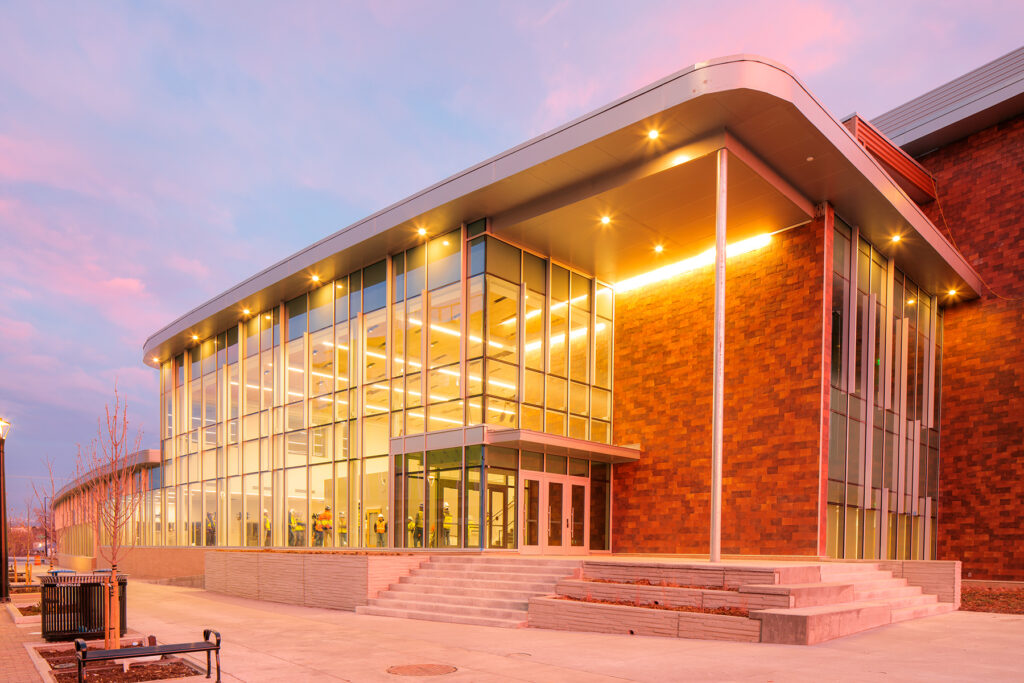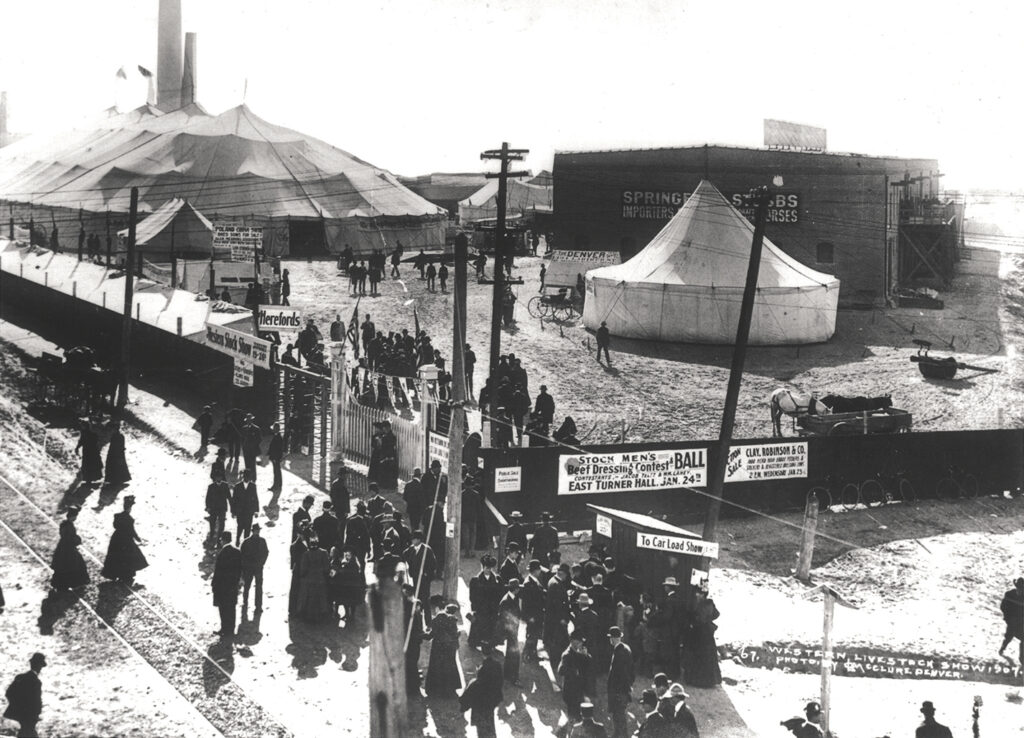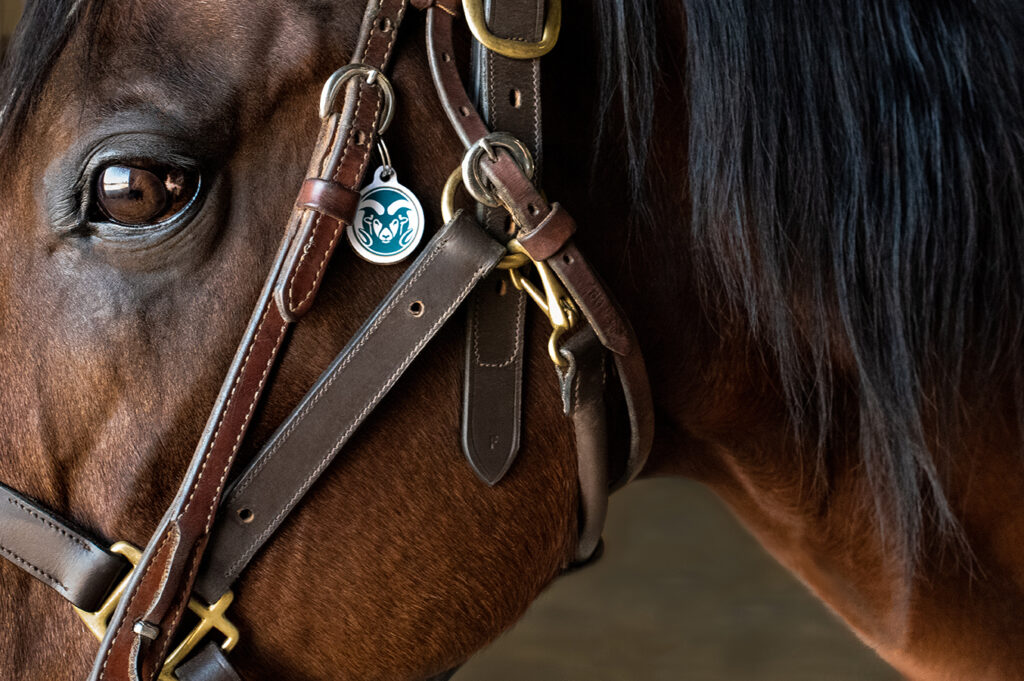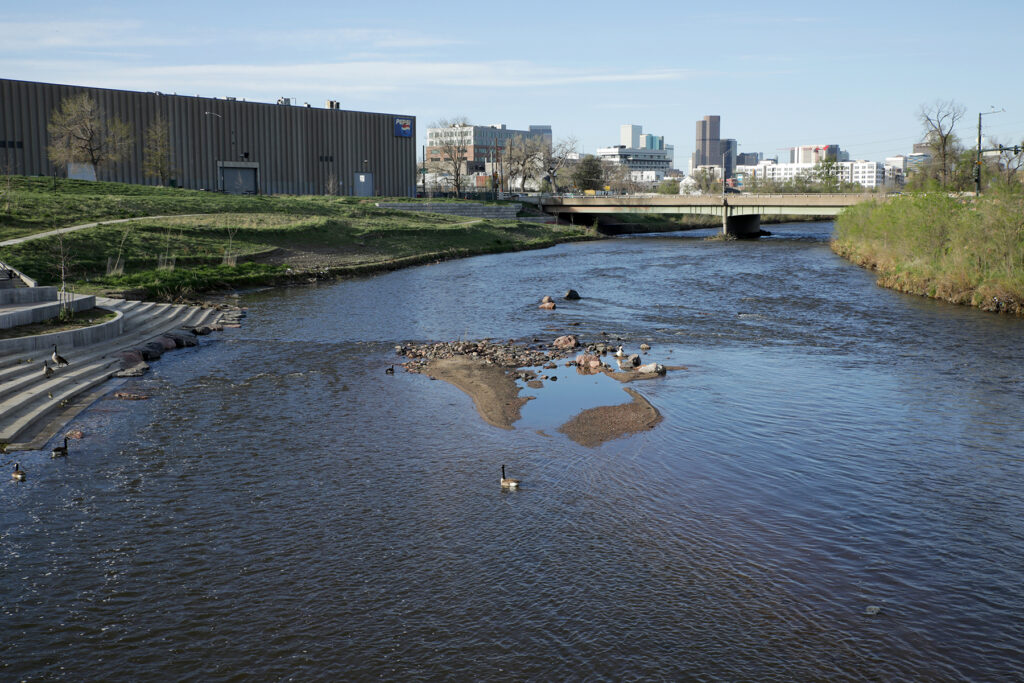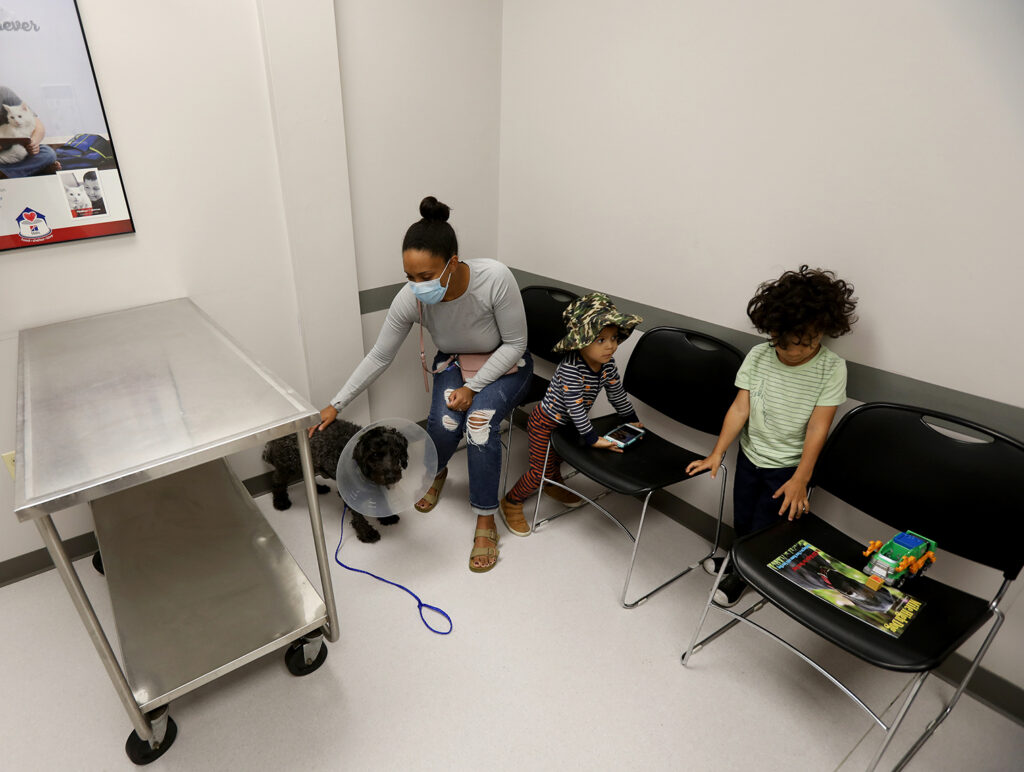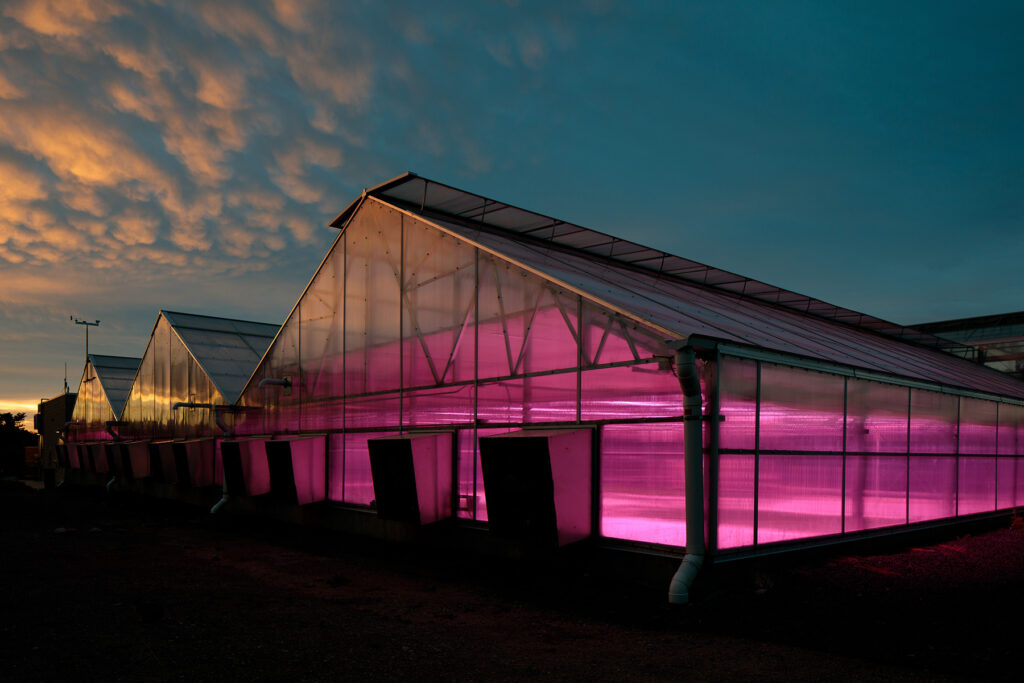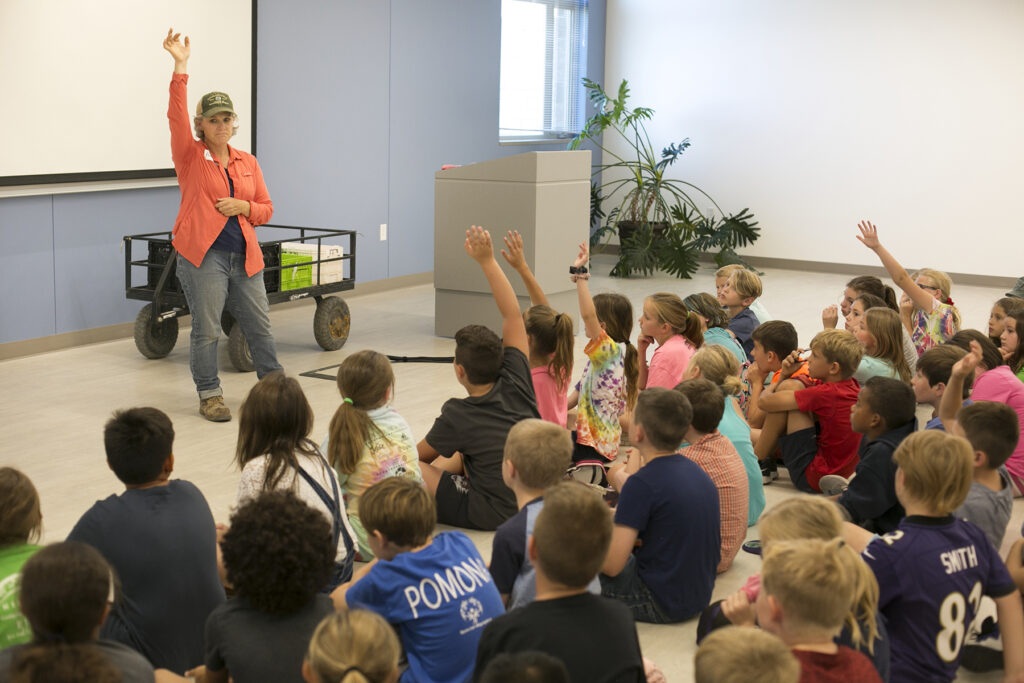
PRESENTING:
CSU SPUR
The one-of-a-kind campus opens in January, with a public celebration on Jan. 15.
Jan. 3, 2022
AS CHANCELLOR OF THE COLORADO STATE UNIVERSITY SYSTEM, Tony Frank watches a lot of trend lines.
Much of what he sees is unnerving: By 2050, people in the food and agriculture industry will need to feed a world population upward of 9.5 billion people – roughly 25 percent more than today. This challenge will transpire amid other trends: Urbanization is eating up farmland; climate change is depleting water sources and intensifying drought, wildfires, and natural disasters; air pollution, contaminated water, and infectious disease imperil the health of millions worldwide.
Of course, many students are preparing to tackle these challenges through their studies at Colorado State University in Fort Collins, CSU Pueblo, and CSU Global, the CSU System’s three degree-granting campuses. You might think that would allay Frank’s concerns.
But, here, too, Frank has a set of worrisome numbers. Of the 56,505 children born in Colorado in 1997, only 33 percent graduated from college in six years, the benchmark used to gauge graduation rates. That means 67 percent of kids born in Colorado that year – most of whom are now 24 years old – have not received the college education that would best prepare them to confront the world’s urgent challenges. And those who did graduate were overwhelmingly white – underscoring a need for greater access to higher education and the opportunities that arise from it.
That’s where CSU Spur comes in.
Denver is proud to partner with the CSU Spur campus as it inspires learners of all ages to engage in big challenges in food, water, and health. Just as important, CSU Spur will house world-class research and spaces for innovation in partnership with government, nonprofits, and businesses. It will build on Denver’s existing culture of innovation, leveraging diverse skills and interests to identify and implement solutions to challenges faced by the city, state, nation, and world.
— Denver Mayor Michael Hancock
First and foremost, the new campus at the National Western Center in north Denver is designed to spark the interest of Colorado schoolkids in careers in food, water, and health – three topics that thread through the globe’s knottiest problems. Unlike other campuses, CSU Spur will not grant college degrees. Instead, its programs focus wholly on public education, research, and community outreach – with most programs on full display. That means visiting students may interact with scientists and learn through observation and hands-on activities.
“Education is the blood that runs through the veins of this project,” Frank said of the CSU System’s largest building initiative. “Food, water, and health are all things we are really good at in our scientific strength, ability, and reputation. They all represent huge areas of societal need – and are interrelated. They are all topics I think you can use really effectively to engage K-12 students.”
For instance, a youngster observing a dog’s surgery at the Dumb Friends League Veterinary Hospital at CSU Spur will hear a description of the procedure in the Vida building, which houses health programs; will have the chance to ask questions; may learn about human and animal anatomy in a nearby virtual reality lab; and will discover the educational path to becoming a professional in health care.
“One of the best ways to be successful in a career and improve your family’s quality of life is to get a college education,” Frank said.
The campus has been constructed with $200 million allocated by the Colorado General Assembly. CSU Spur includes three buildings: Vida, with programs centered on animal and human health; Terra, for programs related to food and agriculture; and Hydro, focusing on water. The Vida building will be the first to fully open Jan. 7, with the other buildings opening later in 2022. A grand opening for Vida will be noon to 6:30 p.m., Saturday, Jan. 15, as part of CSU Day at the National Western Stock Show; tours and activities will be free and open to the public.
The campus name incorporates several concepts: It is a nod to the spur on a cowboy’s boot and to a railway branch, references to the National Western Center location and to Colorado State’s longtime affiliation with the National Western Stock Show. The name also reflects CSU Spur’s role as an extension of the CSU System’s three degree-granting campuses – Colorado State University in Fort Collins, CSU Pueblo, and CSU Global. The campus will spur innovation. And, evoking a railway spur, CSU Spur will start kids on important routes in education and careers.
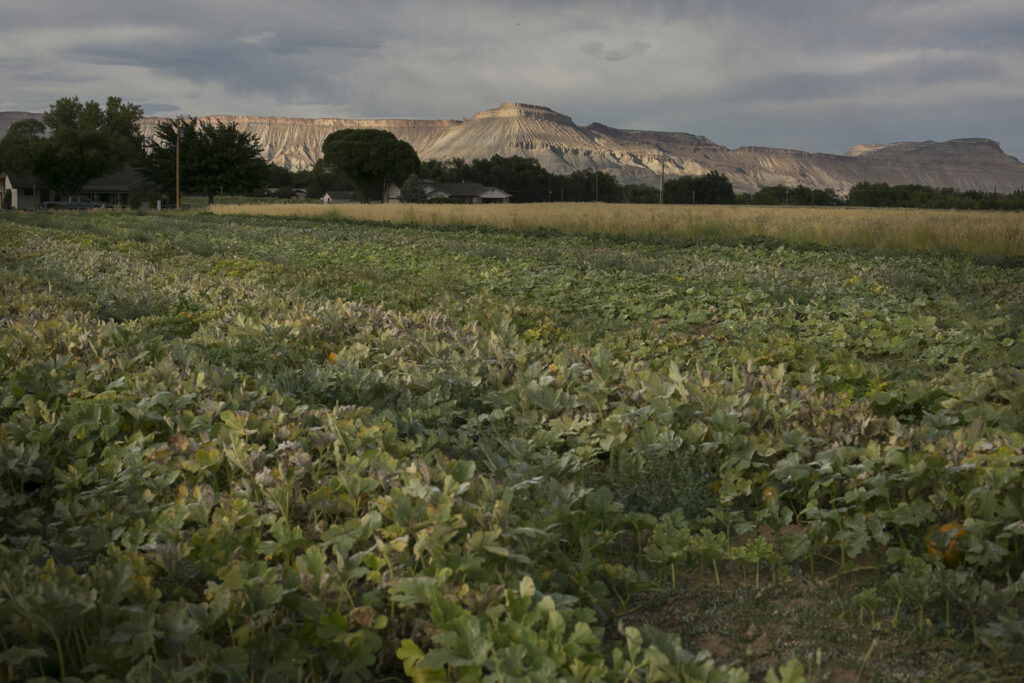
GETTING YOUNG STUDENTS INTERESTED in high-impact careers built on science, technology, engineering, and math is not the only objective at CSU Spur. Programs at the campus also are designed to involve industry partners in research and innovation. For instance, a state-of-the-art food lab in the Terra building offers outside companies and entrepreneurs the space to develop value-added meat, dairy, and fruit and vegetable products.
Likewise, campus meeting spaces may be sites for professional gatherings and conferences. For instance, the annual Water in the West Symposium is a well-established early offering of the CSU Spur campus and soon will be home-based in the Hydro building. The symposium, recently held for the fourth time, has offered presentations from national thought leaders in research, government, and industry.
Rural and urban. Business and academia. State, national, and international. Drawing together a variety of perspectives is a key way to generate new ideas, Frank noted. “If you can bring viewpoints together in one place, you can probably prompt some real innovation,” he said. “In particular, we want to bring rural issues into the urban setting for discussion, greater understanding, and collaborative problem-solving.”
There’s always a potential for big projects like this to come in and marginalize people or communities. But this project is showing a commitment to the community. It’s working for our kids and giving kids opportunities.
— Melissa Boyd, principal, Bruce Randolph School
FROM THE OUTSET OF PLANNING FOR CSU SPUR, university officials have worked closely with residents in nearby Globeville and Elyria-Swansea neighborhoods to ensure that programs involve and fill needs in the local community. To put it simply, CSU Spur’s leaders want to make sure the campus is a good neighbor.
To that end, the CSU System has partnered for several years with Bruce Randolph School, a middle and high school just a few minutes away from CSU Spur. Through the partnership, students with diverse backgrounds have interacted with campus faculty and staff in many ways: by visiting CSU campuses and learning about scholarship opportunities, conducting hands-on science experiments, participating in therapeutic horseback riding, and studying horticulture for college credit, among other opportunities. The CSU System also has created scholarships for students from the neighboring ZIP code. The partnership exemplifies the role of CSU Spur as a Metro Denver doorway to CSU campuses.
“It has been an enriching partnership. CSU has shown such an interest in our school and a commitment to our kids. They’re saying, ‘We value you,’” said Melissa Boyd, principal at Bruce Randolph School. “There’s always a potential for big projects like this to come in and marginalize people or communities. But this project is showing a commitment to the community. It’s working for our kids and giving kids opportunities.”
I’m excited by the idea of a family walking through the doors of Vida, our first building to open in January, and leaving inspired in some way. The direct connection our visitors will have to scientists and professionals is an important and unusual aspect of what Vida will offer, and an aspect I hope will allow young people to see themselves in health careers.
— Jocelyn Hittle, assistant vice chancellor, CSU Spur
THE CONCEPT FOR CSU SPUR BEGAN TO GERMINATE in 2008, when leaders of the National Western Stock Show began discussing a need to upgrade the iconic event’s facilities. For a time, there was a distinct possibility the stock show would move from its historic grounds near the I-25 and I-70 interchange to an outlying location in Aurora, where facilities might have been built from scratch. That would have entailed a massive construction project and relocation of a vital event held in Denver since 1906. The stock show’s annual attendance tops 650,000; it has an estimated economic impact of $130 million in Metro Denver each year.
After extensive study and debate, Denver Mayor Michael Hancock and leaders of the National Western Stock Show determined that the event, the city and county of Denver, and countless stakeholders would be best served by keeping the stock show in place.
Yet, the site’s facilities have still demanded upgrades for the stock show to remain successful. So, partners opted to dramatically renovate the stock show grounds and adopt a year-round business model to help finance facility improvements. The redevelopment, called the National Western Center, is evolving into a place for ongoing entertainment, education, and agribusiness innovation.
The 2022 National Western Stock Show is shaping up to be one of a kind, with the grand opening of the newly constructed historic Yards, Stockyards Event Center, and CSU Spur campus. The new facilities are state of the art and will set the standard into the future.
— Paul Andrews, president and CEO, National Western Stock Show
COLORADO STATE UNIVERSITY GOT INVOLVED to advance its educational mission through CSU Spur – a campus focused on teaching, research, and outreach, in keeping with the land-grant mission of the CSU System’s flagship campus in Fort Collins. The Denver Museum of Nature & Science and History Colorado also joined the effort to build the National Western Center, bringing the number of founding partners to five.
It was a natural fit for CSU, Frank said, because the university and the National Western Stock Show have been partners with a shared focus on education since the stock show’s inaugural year. As CSU Spur opens in January, the stock show will open newly constructed Yards and a Stockyards Event Center for cattle exhibitions and other activities.
“These openings in January are important to Colorado and the world because it shows we are serious about providing a place that celebrates Western heritage, education, and entertainment at facilities that are open 365 days a year,” said Paul Andrews, president and chief executive officer of the National Western Stock Show. “If you want to experience what Western heritage really is, the National Western Center in Denver, Colorado, is the place.”
SHARE

